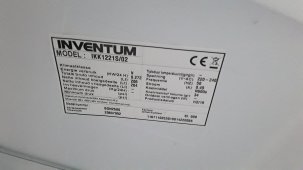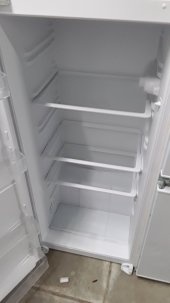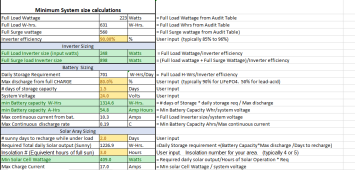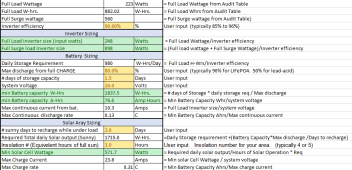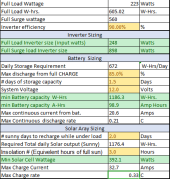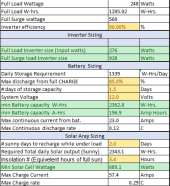Hi, I have filled the spreadshhet provided at the resources for sizing the system, are my results reasonable?

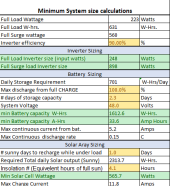
I am not sure the the solar array is correct, only 565 ? Also the Inverter seems too low.
I wanted to ask a question about the hours of full sun, can I use the number that the http://www.solarelectricityhandbook.com/ website gives for my location, the site is giving 4.09 in the lower winter but is per sqr. meter.
The fan is at 0 hours because this is the winter measurments, this are more challenging that the summer ones thats why I am focusing in them.
Thanks


I am not sure the the solar array is correct, only 565 ? Also the Inverter seems too low.
I wanted to ask a question about the hours of full sun, can I use the number that the http://www.solarelectricityhandbook.com/ website gives for my location, the site is giving 4.09 in the lower winter but is per sqr. meter.
The fan is at 0 hours because this is the winter measurments, this are more challenging that the summer ones thats why I am focusing in them.
Thanks



